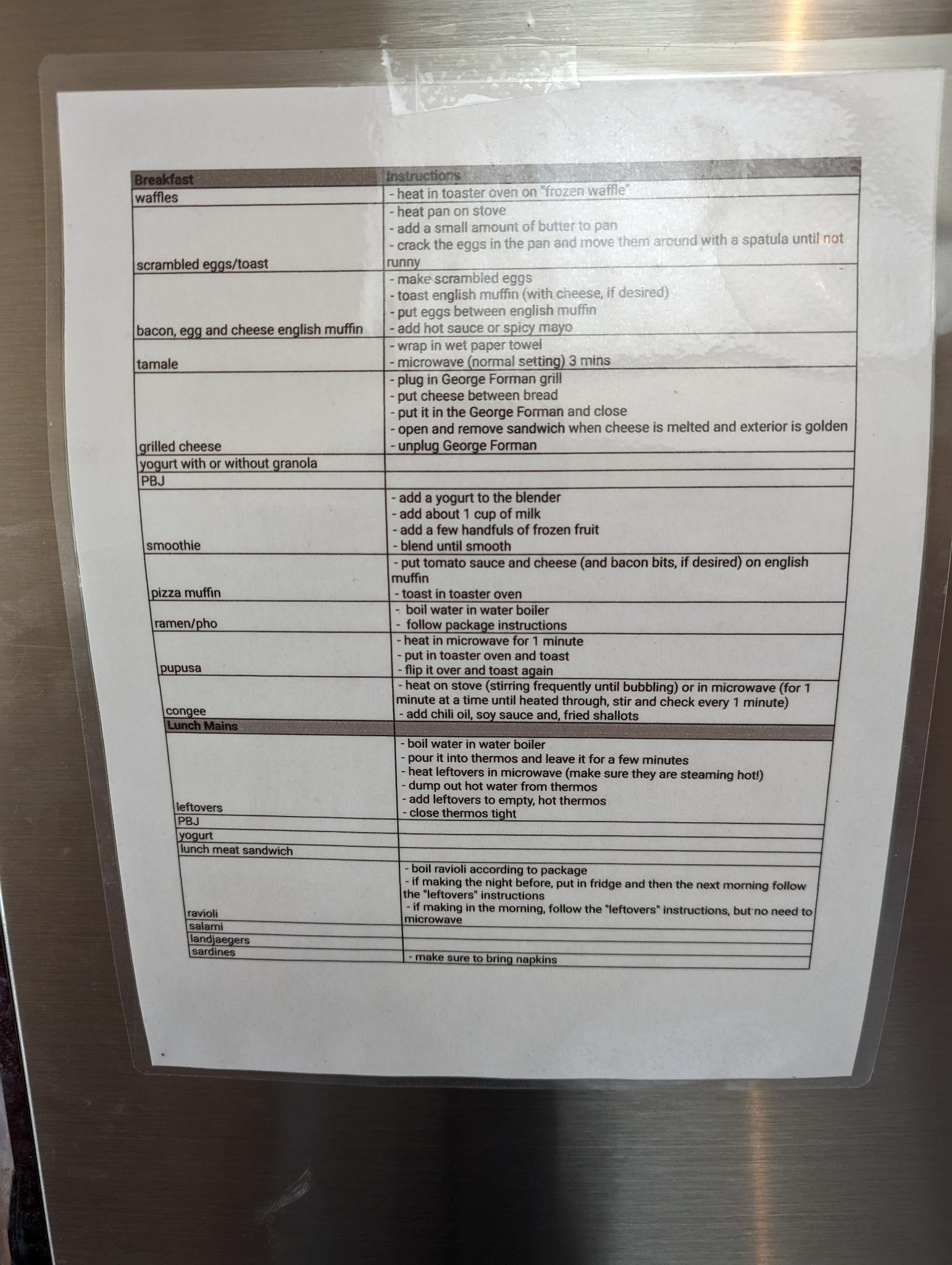Recently, my life has dramatically changed for the better.
For the first time since I became a parent almost 15 years ago, my alarm is set for AFTER my kids leave the house for school.
No, I haven’t hired a nanny or a chauffeur.
No, my husband isn’t on morning duty.
My kids have reached a level of independence that seemed impossible a few years ago.
While I can’t take all the credit, of course, I was certainly instrumental in this endeavor.
So, get this!:
- My kids are currently getting up when their own alarms go off, a full 90 minutes before mine does.
- They are making their own breakfast (and actually eating!), making their own lunches (ok, they’ve been doing this part since 1st grade) and getting themselves to school on public transit.
- All before my alarm goes off.
I don’t mean to brag, but I’m really, really excited about this development.
Waking up has been the hardest part of my day since I was in kindergarten.
I am NOT a morning person. I have tried to be a morning person. Trust me, I’ve tried.
But body clocks are a hell of a thing.
So, as a result of this newfound independence in my kids, I’m getting about 90 minutes more sleep than I did before.
I’ve gone from getting about 7 hours of sleep a night to 8.5 and it feels really, really good.
Now, how did I achieve this feat?
Through a lot of preparation and training.
About 6 months before the school year started, I started floating the idea with my kids that this would be the year they were independent in the morning.
I was worried it wouldn’t happen.
One of my kids has more of my chronotopic constitution; in previous years he’s had multiple alarms and I still had to shake him awake, alarms blaring, multiple times before he would drag himself out of bed 10 minutes before he had to head out the door.
(And no, I wasn’t even annoyed because that was exactly me as a teenager…and maybe even an adult. My husband is endlessly annoyed by the number of times I snooze the alarm. And I haven’t taken a shower in the morning in, I don’t know, maybe ever. I’m not unclean, I promise, I just shower at night, knowing myself well enough that I will always prioritize 10 extra minutes of sleep in the morning over a shower.)
And so we started talking about it, in our weekly family meetings.
- What support did my kids need to be able to make this happen?
- What skills did they need?
- Where did they feel comfortable and where did they need more practice?
I was most worried about my younger one (my baby!) and how he would fare with making his own breakfast and lunch.
His older brother has sort of carried him in this regard in the past, but the little one needs to leave the house 30 minutes before the older one since his school starts earlier.
So we sat down together and figured out what he needed to be successfully independent in this endeavor.
And here’s the result:

We have a laminated chart showing all the breakfast and lunch options, and exactly how to make them.
I showed him how to make all these things and he consults this chart regularly.
Sometimes we need supportive structures to foster independence.
And you know what? Even if you don’t have kids, I bet you’ve had the opportunity to help shepherd someone to independence.
Maybe you’re a manager.
Maybe you’re a mentor.
Maybe you’ve been assigned as an onboarding buddy to a new hire at work.
And if you’ve ever been in that position, or if you expect to, I want to share some resources and tools that can help you create supportive structures for others.
- Tango
- Tango is a (free!) tool that auto-magically creates process documentation for you. It’s honestly quite amazing. You turn it on, do the thing you need to train someone on, and Tango makes a step-by-step process document, complete with screenshots!
- Checklists
- Need a low-tech solution to get someone up to speed. Create a checklist for them! Or better yet, have them create the checklist for themselves!
- Loom*
- Loom is another (free!) tool that is super helpful when it comes to training and setting others up for independence, while also saving you time. (Gotta love that!). Here’s how I use it:
- When I need to train someone on something, I start up a Loom video and record my screen, voice (and even face, if I choose) of me doing the thing. Then, whoever I’m trying to train can use this as a training asset, but also can create a written process from this, should they choose to. What I love about Loom is how easy it is to use. Just click record, click stop and you get a shareable link.
It can be tempting to avoid delegation because you think you can do something better and faster yourself.
But by doing so, you lock yourself in for the long haul.
Instead, try using some of the tools above to ease the training and delegation process.
Think of it in these 4 steps:
- Show
- Do together
- Let them do it alone and provide feedback
- Let go (the most important, and often the most difficult, step)
That last step, the letting go. It’s hard.
For the first few weeks of my kids’ morning independence, I have to admit, I was a bit of a nag.
The night before I was asking:
- What are you making for lunch?
- Have you thought about breakfast?
- Are your alarms set?
Not only was this incredibly annoying to my kids (sorry!) it was also detrimental.
By asking, I was giving the (decidedly unsubtle) message that I didn’t trust them to do it for themselves.
I was undermining them.
And so I pulled the cord and let go.
I still have to resist the urge to check in er…nag.
But I’m getting better with practice (and their feedback!). (insert link to 2 pronged approach post)
And we’re all the better for it.
What’s one thing that’s still on your plate, that you could delegate to someone else?
How about making a plan to share this load with someone else?
And foster their independence, and watch with joy as they flourish while you’ve made time for something else.
*If you purchase something after clicking this Loom link I’ll probably earn a few bucks from it. And please know that I will never recommend something I don’t actually love.


